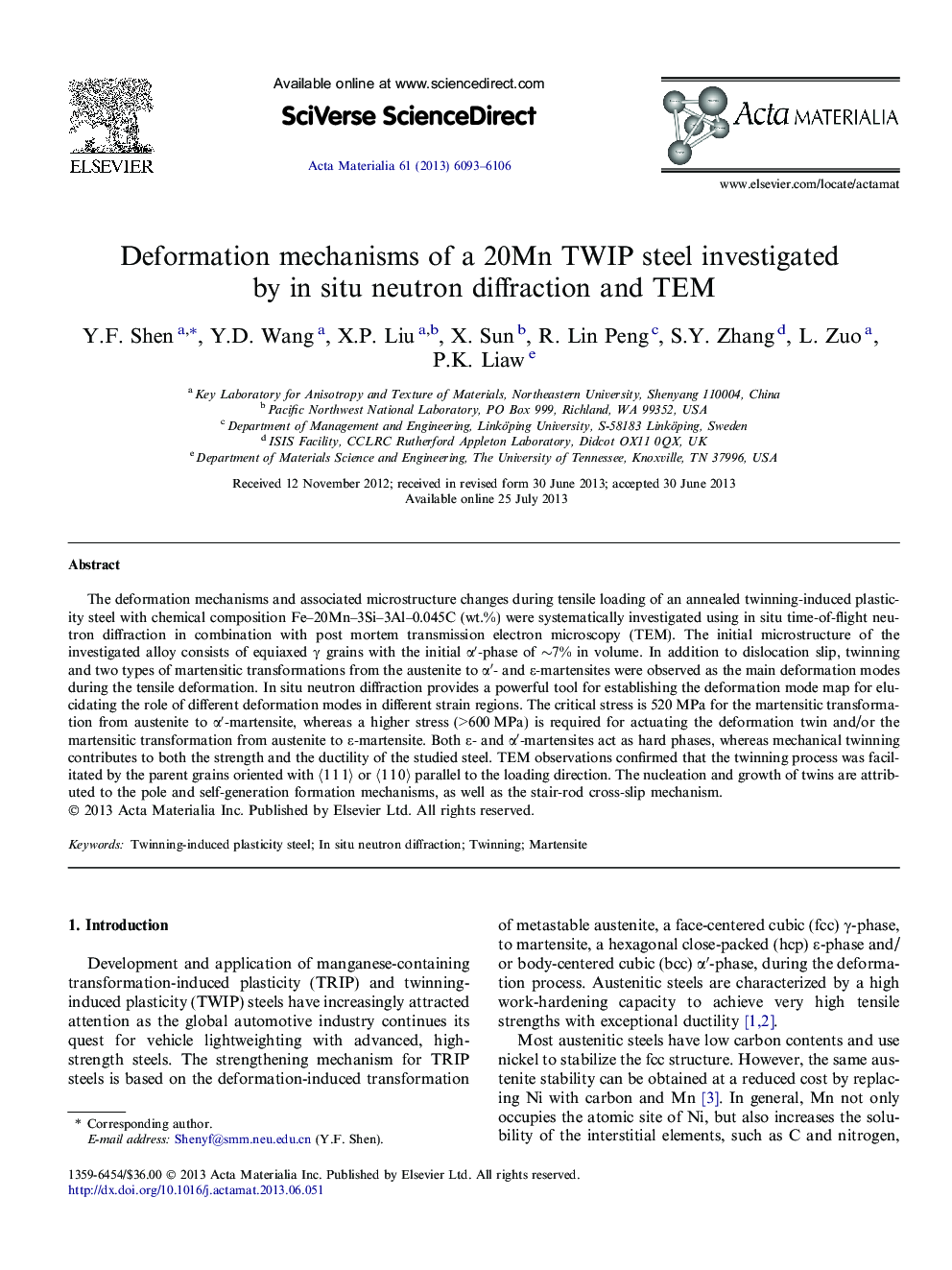| Article ID | Journal | Published Year | Pages | File Type |
|---|---|---|---|---|
| 1445865 | Acta Materialia | 2013 | 14 Pages |
The deformation mechanisms and associated microstructure changes during tensile loading of an annealed twinning-induced plasticity steel with chemical composition Fe–20Mn–3Si–3Al–0.045C (wt.%) were systematically investigated using in situ time-of-flight neutron diffraction in combination with post mortem transmission electron microscopy (TEM). The initial microstructure of the investigated alloy consists of equiaxed γ grains with the initial α′-phase of ∼7% in volume. In addition to dislocation slip, twinning and two types of martensitic transformations from the austenite to α′- and ε-martensites were observed as the main deformation modes during the tensile deformation. In situ neutron diffraction provides a powerful tool for establishing the deformation mode map for elucidating the role of different deformation modes in different strain regions. The critical stress is 520 MPa for the martensitic transformation from austenite to α′-martensite, whereas a higher stress (>600 MPa) is required for actuating the deformation twin and/or the martensitic transformation from austenite to ε-martensite. Both ε- and α′-martensites act as hard phases, whereas mechanical twinning contributes to both the strength and the ductility of the studied steel. TEM observations confirmed that the twinning process was facilitated by the parent grains oriented with 〈1 1 1〉 or 〈1 1 0〉 parallel to the loading direction. The nucleation and growth of twins are attributed to the pole and self-generation formation mechanisms, as well as the stair-rod cross-slip mechanism.
